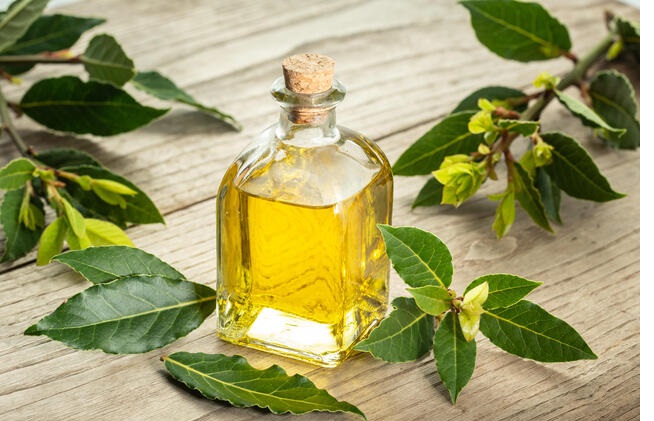Bay oil, derived from the leaves of the bay laurel tree (Laurus nobilis), has been prized for centuries for its medicinal, culinary, and aromatic properties. With its warm, spicy, and slightly woody fragrance, this essential oil is a powerhouse of therapeutic benefits—from relieving muscle pain to boosting respiratory health.
In this blog post, we’ll explore:
✔ How bay oil is extracted
✔ Its key therapeutic properties
✔ Top uses for health and wellness
✔ Safety precautions and side effects
Let’s uncover the secrets of this ancient remedy!
What Is Bay Oil?
Bay oil is extracted through steam distillation of the leaves of the bay laurel tree, native to the Mediterranean. It contains potent bioactive compounds, including:
- Cineole (Eucalyptol) – Supports respiratory health
- Linalool – Promotes relaxation
- Pinene – Anti-inflammatory and antiseptic
- Eugenol – Pain-relieving and antimicrobial
Unlike bay leaf essential oil (from Laurus nobilis), West Indian bay oil (from Pimenta racemosa) has a different chemical profile and is often used in perfumery.
Therapeutic Properties of Bay Oil
1. Relieves Muscle & Joint Pain
- Anti-inflammatory and analgesic properties help soothe arthritis, sprains, and sore muscles.
- How to use: Dilute with a carrier oil (like coconut or almond oil) and massage into affected areas.
2. Supports Respiratory Health
- Expectorant properties help clear congestion, bronchitis, and sinusitis.
- How to use: Add a few drops to a steam inhalation or diffuser.
3. Boosts Digestion
- Stimulates bile production, easing indigestion, bloating, and cramps.
- How to use: Mix 1-2 drops with a carrier oil and massage onto the abdomen.
4. Enhances Hair & Scalp Health
- Antifungal properties combat dandruff, while its nutrients strengthen hair follicles.
- How to use: Add a few drops to shampoo or a warm oil hair mask.
5. Reduces Stress & Anxiety
- Calming effects help alleviate nervous tension and improve sleep.
- How to use: Diffuse at bedtime or add to a relaxing bath (mixed with Epsom salts).
6. Antimicrobial & Wound Healing
- Antiseptic properties protect minor cuts and skin infections.
- How to use: Dilute and apply to clean, affected areas (patch test first).
How to Use Bay Oil Safely
1. Aromatherapy & Diffusion
- Add 3-5 drops to a diffuser to purify the air and uplift mood.
2. Topical Application (Always Diluted!)
- Mix 2-3 drops with 1 tbsp carrier oil (jojoba, coconut, or almond oil) for massages or skincare.
3. Steam Inhalation
- Add 2 drops to a bowl of hot water, cover your head with a towel, and inhale for congestion relief.
4. Hair & Scalp Treatment
- Blend with olive or argan oil, massage into the scalp, and rinse after 30 minutes.
Safety Precautions & Side Effects
- Never ingest bay oil undiluted—it can be toxic.
- Skin sensitivity: Always perform a patch test before topical use.
- Pregnancy & children: Avoid or consult a doctor before use.
- Medication interactions: May affect blood pressure or blood-thinning medications.

Bay oil is a versatile, natural remedy with benefits ranging from pain relief to respiratory support. Whether used in aromatherapy, massage, or skincare, its healing properties make it a valuable addition to any wellness routine.
Have you tried bay oil?
Share your favorite uses in the comments!

